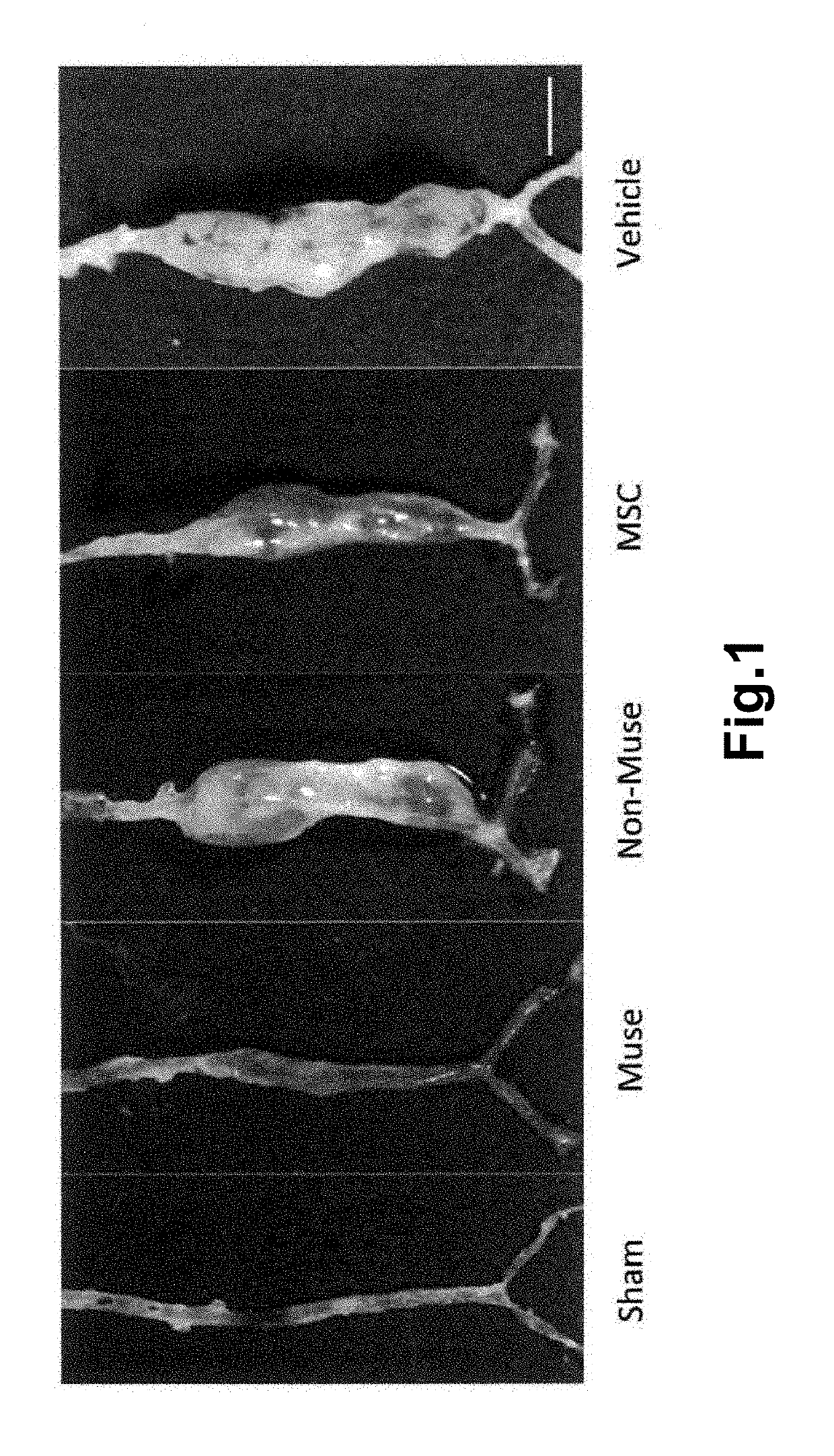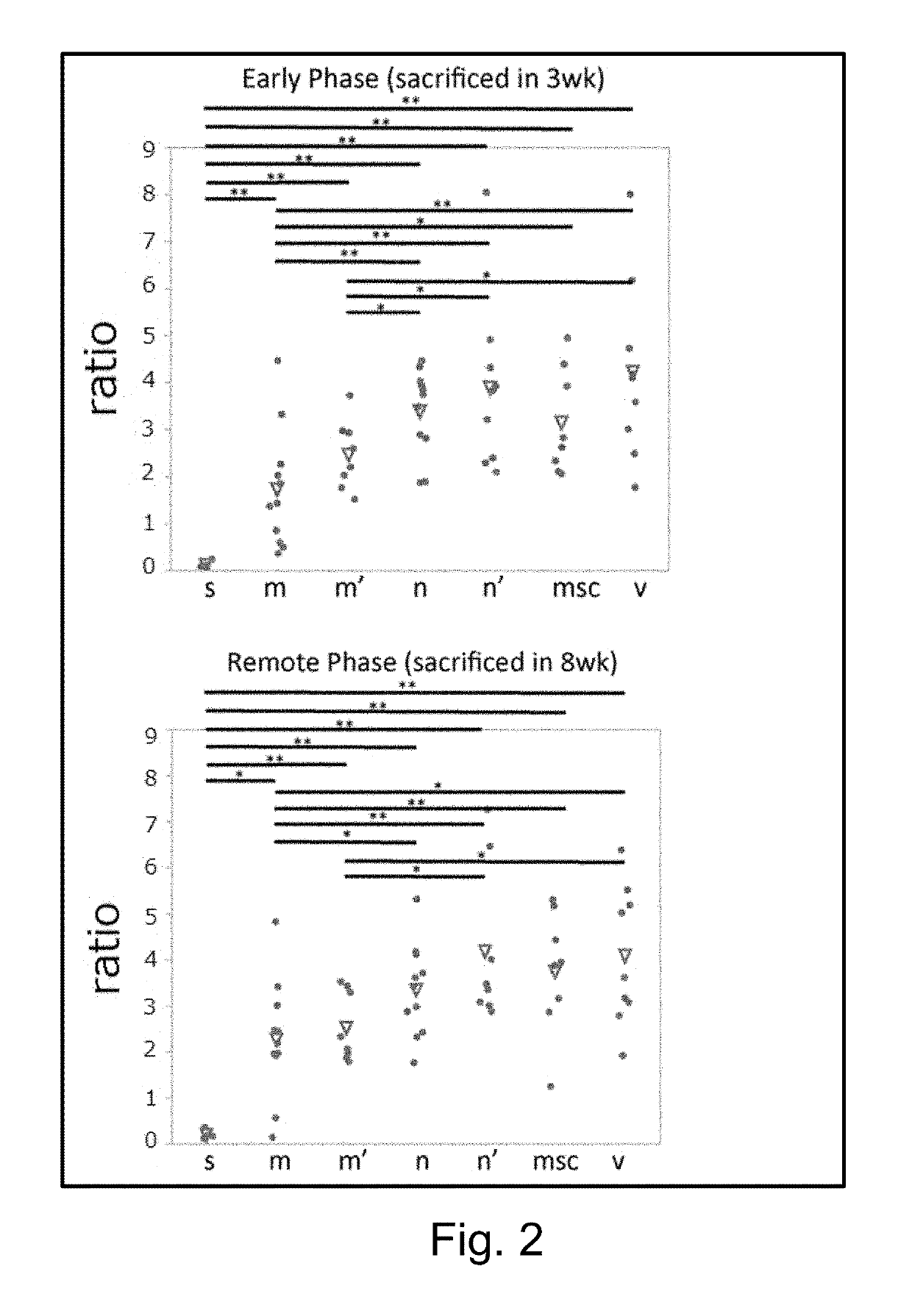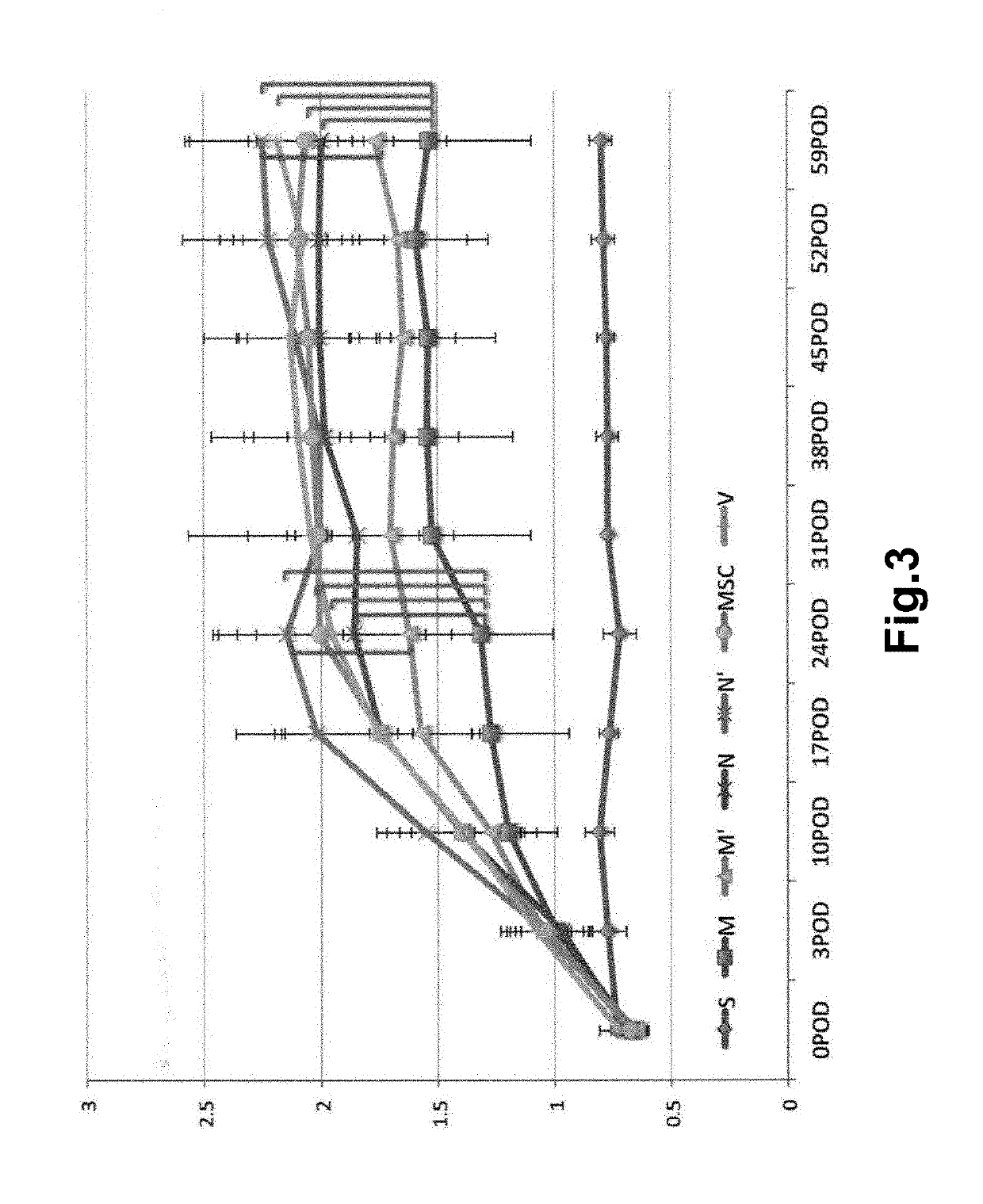Prophylactic or therapeutic agent for vascular disorder
a vascular disorder and vascular disease technology, applied in the field of regenerative therapy cell products, can solve the problems of difficult detection of true aneurysms, difficult dissection of aneurysms, direct cause of death, etc., and achieve the effects of improving or recovering functions, non-tumorigenicity, and superior safety
- Summary
- Abstract
- Description
- Claims
- Application Information
AI Technical Summary
Benefits of technology
Problems solved by technology
Method used
Image
Examples
example 1
Production of Mouse Model of Aneurysm
[0090]Experimental protocols using mice in this Example complied with the “Regulations for Animal Experiments and Related Activities at Tohoku University,” and experimental animals were prepared according to the regulations under the supervision of the Laboratory Animal Research Center at Tohoku University. More specifically, with reference to a Non-patent Document: Bi Y, et al., PLoS ONE 2013. “Rabbit AAA Model via Periaortic CaCl2 and Elastase Incubation,” the model mice were prepared by the following procedures.
[0091]Eight-week-old male SCID mice (CLEA Japan) were anesthetized with isoflurane inhalation (induction: 4%, maintenance: 1-1.5%). After opening the abdomen, a region from just below the left renal vein to the aortic bifurcation was circumferentially detached under a stereoscopic microscope (Leica MZ 6). When one or two lumbar artery branches were observed, they were ligated with 10-0 nylon thread and cut off. The periphery of the deta...
example 2
Preparation of Human Muse Cell
[0092]Muse cells were obtained according to the method described in WO2011 / 007900 on isolation and identification of human Muse cells. A commercially available mesenchymal stem cell (MSC, Lonza) was used as a source of Muse cell. Muse cells used for transplantation expressed green fluorescent protein (GFP) to confirm engraftment to aortic tissues. For cell labeling with GFP, the lentivirus-GFP gene was introduced into the Muse cells in advance. Muse cells labeled with GFP were isolated as a cell double-positive for GFP and SSEA-3 by FACS. The cells remaining after separating Muse cells from MSC were used as non-Muse cells. GFP-positive MSCs were also isolated by FACS and used as MSC group.
example 3
Administration of Cells to Aneurysm Model Mouse
[0093]The aneurysm model mice prepared in Example 1 were divided into 4 groups, and Muse cells (2×104, 200 μL) (M), non-Muse cells (2×104, 200 μL) (N), MSCs (2×104, 200 μL) (MSC) or vehicle (phosphate buffer) (V) was administered to mice in each group intravenously via their tail vein 3 times, at day 3, 10, and 17 after the model preparation. Single-dose groups receiving Muse cells (2×104, 200 μL) or non-Muse cells (2×104, 200 μL) only at day 3 after the model preparation (M′ and N′, respectively) were also provided. In addition, a group in which aneurysm was not established was used as Sham group (S) for comparison. The number of animals per group was 8 (but, 11 for the 3-time administration models in the Muse and non-Muse groups, and 4 in the Sham group).
PUM
 Login to View More
Login to View More Abstract
Description
Claims
Application Information
 Login to View More
Login to View More - R&D
- Intellectual Property
- Life Sciences
- Materials
- Tech Scout
- Unparalleled Data Quality
- Higher Quality Content
- 60% Fewer Hallucinations
Browse by: Latest US Patents, China's latest patents, Technical Efficacy Thesaurus, Application Domain, Technology Topic, Popular Technical Reports.
© 2025 PatSnap. All rights reserved.Legal|Privacy policy|Modern Slavery Act Transparency Statement|Sitemap|About US| Contact US: help@patsnap.com



